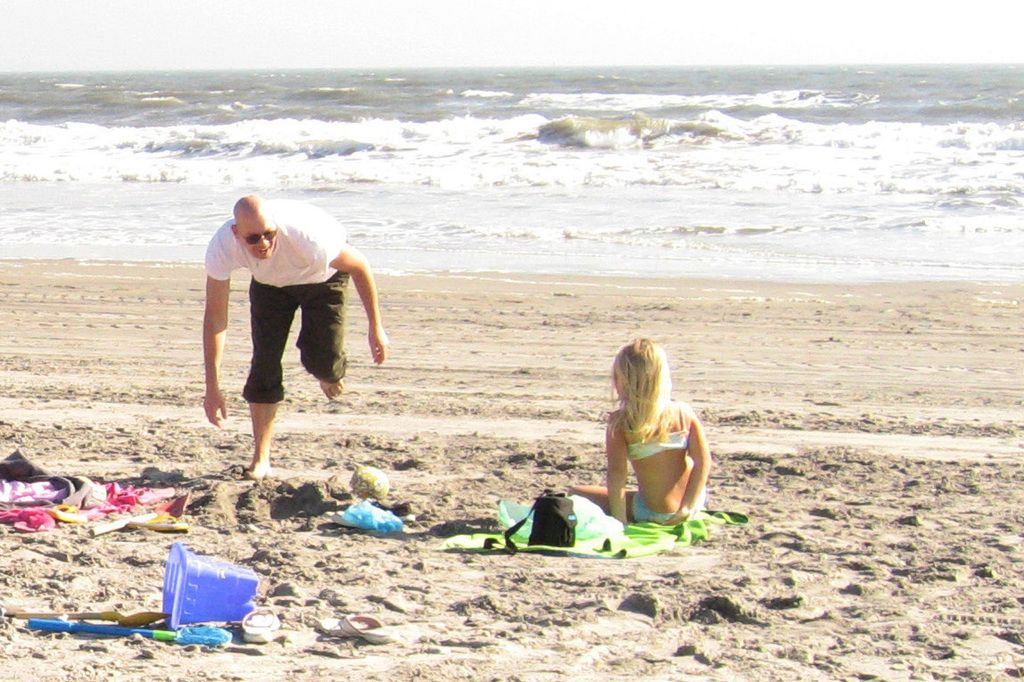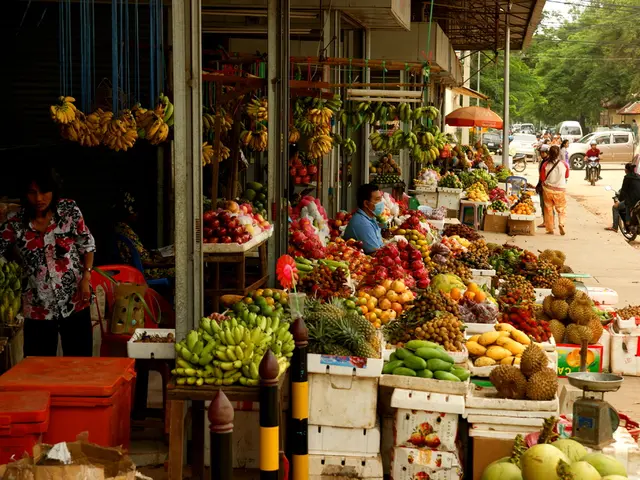Blooming Plants That Entice Birds, Creating a Captivating Garden Appearance
Gardening for the Birds: 25 Plants to Invite Feathered Friends and Beautify Your Space
Welcome life, color, and melody into your garden with these bird-friendly plants. They'll not only add long-lasting visual charm but also serve as essential food sources for our feathered friends. From hummingbirds to seed- lovers, discover which plants will bring harmony to your backyard. Here's a list of 25 plants that offer habitat, nourishment, and an eye-catching display while supporting your local ecosystem.
1. Purple Coneflower (Echinacea purpurea)
Native wildflowers with bold purple petals create a striking statement, enticing goldfinches and other songbirds to feast on seeds in the standing seed heads. Drought-tolerant, these flowers thrive in full sun and add a dynamic focal point to garden beds. Bees, butterflies, and hummingbirds appreciate the nectar-rich blooms too!
2. Black-Eyed Susan (Rudbeckia hirta)
Yellow blooms with a dark center attract finches and sparrows. Cluster seeds in cones after blooming. These easy-to-grow, hardy flowers tolerate various conditions and add brilliant splashes of color during sunny days.
3. Bee Balm (Monarda didyma)
Hummingbirds flock to humming red, pink, or purple blooms, thanks to their tubular shape. Catering to bees and butterflies, bee balm offers rich nectar. It prefers moist, well-drained soil and multiplies over time to create lively clusters. A strong scent offers extra pest protection.
4. Cardinal Flower (Lobelia cardinalis)
Hummingbirds can't resist tall spikes of bright-red blooms, making this plant a sought-after destination for these winged wonders. Growing well in moist areas and along pond edges, cardinal flowers prefer partial shade but are also tolerant of sun with adequate moisture. Their captivating color makes them an incredible choice for late-summer gardens.
5. Coral Honeysuckle (Lonicera sempervirens)
This non-invasive vine showcases clusters of red or coral tubular flowers that hummingbirds adore. A safer alternative to some of its aggressive relatives, coral honeysuckle blooms from spring to summer, producing berries for songbirds later in the season. Ideal for trellises, fences, or arbors, it thrives in full sun to light shade.
6. Elderberry (Sambucus canadensis)
Robins, bluebirds, and cedar waxwings eagerly consume clusters of dark purple berries. Beyond offering food, elderberry shrubs provide shelter and grow quickly, often reaching considerable heights. They thrive in moist, well-drained soil and full sun. Before berries appear, flowering attracts beneficial pollinators like bees.
7. Serviceberry (Amelanchier spp.)
Enjoy fruits rich in nutrients appreciated by thrushes and orientals as they feast on serviceberry trees and shrubs. Beyond delicious berries, these plants offer beautiful white flowers in spring and autumn foliage. Adaptable to many soil types and light conditions, serviceberries make a worthy addition to any garden.
8. Sunflower (Helianthus annuus)
Known for their towering sunny blooms, sunflowers provide an excellent food source for finches, chickadees, and other seed-eating birds. Once flowers fade, seed heads remain, offering nourishment. Sunflowers grow quickly, thrive in full sun, and are easy to cultivate from seeds.
9. Zinnia (Zinnia elegans)
Colorful annuals attract both hummingbirds and seed-eating birds, with vibrant flowers aiding in nectar collection. After flowering, birds feed on seeds within dried flower heads. These plants bloom prolifically in sunny spots and offer a wide array of captivating hues.
10. Columbine (Aquilegia canadensis)
native wildflowers bloom with nodding, red-and-yellow flowers that hummingbirds find irresistible. This shade-loving plant is perfect for woodland-style gardens. After flowering, Columbine produces seed pods, which birds utilize for food. Self-sowing in the garden keeps new plants coming!
11. Butterfly Weed (Asclepias tuberosa)
Although best known for helping monarch butterflies, butterfly weed also contributes to bird nourishment. Its orange blooms draw in hummingbirds seeking nectar. Once flowers fade, the plant produces seed pods filled with fluffy seeds useful for nesting. Resilient and low-maintenance, this plant thrives in sunny, dry areas.
12. Red Hot Poker (Kniphofia uvaria)
This tall, showy perennial boasts eye-catching, spiked red, orange, or yellow flowers that hummingbirds love for their nectar-rich blooms. Plant in full sun and well-drained soil for optimum growth. Its vertical structure adds character to bird-friendly borders.
13. Holly (Ilex opaca)
American holly offers fruit sought after by cedar waxwings and robins during winter. Its dense branches provide shelter and nesting sites, making it an essential element in a bird-friendly garden. Preferring full sun to partial shade, it grows best in moist, acidic soil.
14. Winterberry (Ilex verticillata)
In fall and winter, Winterberry's vibrant red berries become a striking beacon for bluebirds and mockingbirds. This deciduous holly loses its leaves, allowing berries to stand out impressively. It grows well in wet soils and can tolerate partial shade. As with other hollies, both male and female plants are required for fruiting.
15. Flowering Dogwood (Cornus florida)
This elegant, small tree offers spring flowers, red fruits, and a year-round refuge for birds. Springtime blooms entice hummingbirds, while autumn foliage adds seasonal excitement. Opt for well-drained soil and partial shade for ideal growth.
16. Crabapple Tree (Malus spp.)
With lovely spring blossoms and persistent fruit, crabapple trees provide birds with a steady food source in fall and winter. Thrusting into various species, these trees also offer support for insects, insects that many birds feed to their offspring. Grow crabapples in full sun and well-drained soil for optimum growth. Choose disease-resistant varieties to maintain manageable maintenance.
17. Joe-Pye Weed (Eutrochium purpureum)
A tall native perennial with soft pink to purple flower clusters, Joe-Pye weed attracts butterflies and hummingbirds during bloom and seed-eating birds after. Preferring moist soil and full sun or partial shade, it adds height and texture to borders and naturalized plantings. Its blooms keep popping late in the summer.
18. Goldenrod (Solidago spp.)
Goldenrod contributes to late summer and fall blooms, providing sustenance for insects, which in turn feed seed-eating birds and pollinators. Despite its bulkiness and misleading reputation as a major allergen, goldenrod remains a vital plant for wildlife. It flourishes best in full sun and dry ground.
19. Blueberry Bush (Vaccinium spp.)
These shrubs offer sweet berries relished by birds like thrushes and orioles. They also provide spring flowers and bright foliage in autumn. Suitable for various soil types and light conditions, blueberry plants make excellent options for edible landscaping that supports bird populations.
20. Blanket Flower (Gaillardia pulchella)
This vibrant perennial produces daisy-like blooms in red, orange, or yellow hues. Birds enjoy feasting on the seeds after flowering, while pollinators like bees, hummingbirds, and butterflies are drawn to the nectar-rich flowers. Easy maintenance makes blanket flowers an attractive choice for low-effort birdscaping.
21. Viburnum (Viburnum dentatum)
Viburnum shrubs offer dense cover, spring flowers, and berries that attract an array of birds – especially cardinals. Adaptable to various soil types and growing conditions, viburnum plants can be found thriving in sun or part-shade. They also support beneficial insects and pollinators while providing healthy nesting sites.
22. Trumpet Vine (Campsis radicans)
Trumpet vine is a fast-growing climber with large orange-to-red flowers that hummingbirds adore. Ideal for adorning fences, trellises, or arbors, its thick leaves offer nesting spots to birds, while seeds support nutrition later in the season. While breathtaking, maintain trumpet vine's aggressive tendencies by pruning regularly and providing sufficient growing space.
23. Aster (Symphyotrichum spp.)
Late summer and fall asters supply nectar for hummingbirds and food for finches once the flowers fade. Gleaming hues of lavender, blue, or white enliven borders, making asters a valuable addition to your garden. They grow to their best in full sun and well-drained soil. As diverse as they are beautiful, asters cater to a variety of bird species.
24. Yarrow (Achillea millefolium)
With its fern-like foliage, yarrow boasts dainty flowers that attract insects and seed-eating birds. Flourishing in full sun and well-drained soil, these vibrant perennials offer an easy-to-care-for option for bird-friendly gardens.
25. Beautyberry (Callicarpa americana)
Famed for its bright purple berries that appear in fall and winter, beautyberry attracts a multitude of birds, including mockingbirds and robins. Its graceful shape and soft green leaves turn yellow in autumn, further adding to its appeal. Beautyberry thrives in full sun or part shade, proving to be a low-maintenance addition to a bird-focused garden.
A Garden That Gives Back
By selecting plants that nourish birds and enhance your landscape, you create a verdant sanctuary for avian inhabitants. Each plant serves a unique role in feeding, sheltering, and attracting birds through the seasons. Whether you're starting small or reimagining your entire yard, even just a few of these plants can significantly boost local bird populations. Cultivate a thriving, harmonious environment where people and birds can flourish together.
- Tending to your lifestyle, consider planting Purple Coneflower (Echinacea purpurea) for a striking floral display that attracts goldfinches, other songbirds, and pollinators.
- A splash of color from Black-Eyed Susan (Rudbeckia hirta) can brighten your fashion-and-beauty-inspired outdoor space while offering seeds for finches and sparrows.
- Bees, butterflies, and hummingbirds will appreciate the nectar-rich blooms of Bee Balm (Monarda didyma), adding a touch of personal-growth and learning to your garden.
- With travel in mind, create a welcoming atmosphere for hummingbirds by growing the Tall spikes of Cardinal Flower (Lobelia cardinalis).
- Enhance your home-and-garden design with Coral Honeysuckle (Lonicera sempervirens), a non-invasive vine that attracts hummingbirds and offers berries for songbirds.
- Turn to education-and-self-development as you cultivate an elderberry (Sambucus canadensis) shrub appreciated by robins, bluebirds, and cedar waxwings.
- Serviceberry (Amelanchier spp.) contributes to dietary needs of thrushes and orientals while adding to the aesthetics of your garden.
- For food-and-drink enthusiasts, sunflowers (Helianthus annuus) provide an efficient source of nourishment for finches, chickadees, and other seed-eating birds.
- Shopping for your garden, Zinnia (Zinnia elegans) provides a colorful display appealing to hummingbirds and various seed-eating birds.
- Pets may enjoy observing hummingbirds attracted to the nodding, red-and-yellow flowers of Columbine (Aquilegia canadensis).
- Fashion-conscious gardeners might find Butterfly Weed (Asclepias tuberosa) attractive due to its unique orange blooms that draw in hummingbirds seeking nectar.
- The vertical structure and eye-catching, spiked red, orange, or yellow flowers of Red Hot Poker (Kniphofia uvaria) cater to hummingbirds while revitalizing career-development and job-search efforts with their striking appearance.
- To encourage relationships and socializing through gardening, provide shelter to birds in the dense branches of American holly (Ilex opaca).
- For those who prioritize skills-training and learning, plant Winterberry (Ilex verticillata) to observe bluebirds and mockingbirds feeding on its vibrant red berries during fall and winter.
- Advance your education in horticulture by nurturing the elegance and functionality of Flowering Dogwood (Cornus florida) and crabapple (Malus spp.) trees, which provide sustenance and nesting sites for birds.
- Blend sports and recreation with your love for birds by growing Joe-Pye Weed (Eutrochium purpureum) for butterflies and hummingbirds during bloom and feeding seed-eating birds later.
- By planting Goldenrod (Solidago spp.), you'll immerse yourself in the beauty of late summer while supporting various wildlife species.
- Blueberry Bush (Vaccinium spp.) offers nutritious food for avian visitors while contributing to self-sustaining edible landscaping practices.
- For sporty garden enthusiasts, Viburnum (Viburnum dentatum) provides a dense cover for cardinals and offers an opportunity to sharpen your pruning skills.
- Trumpet Vine (Campsis radicans) offers a home for both birds and butterflies while serving as a challenge for those seeking to control its aggressive growth tendencies.
- Aster (Symphyotrichum spp.) caters to a variety of bird species, providing a diverse and interesting element to your garden.
- Yarrow (Achillea millefolium) adds an elegance to your garden while supporting the diets of various bird species, making it a suitable choice for low-maintenance and bird-friendly spaces.
- Beautyberry (Callicarpa americana) entices a multitude of birds with its vibrant purple berries and acts as a stunning addition to any garden, a testament to your commitment to personal-growth and hobby development.
By following this garden plan, you will establish a space where you and your feathered friends can enjoy mutual enrichment and growth.





